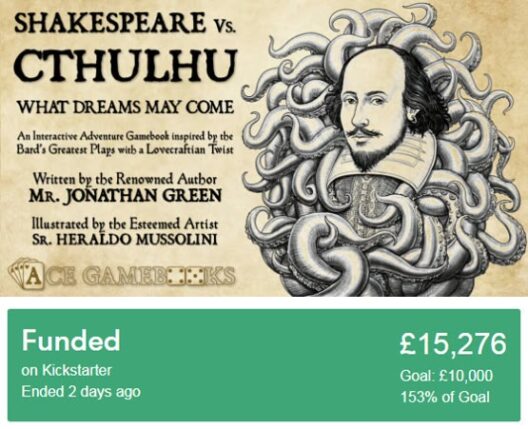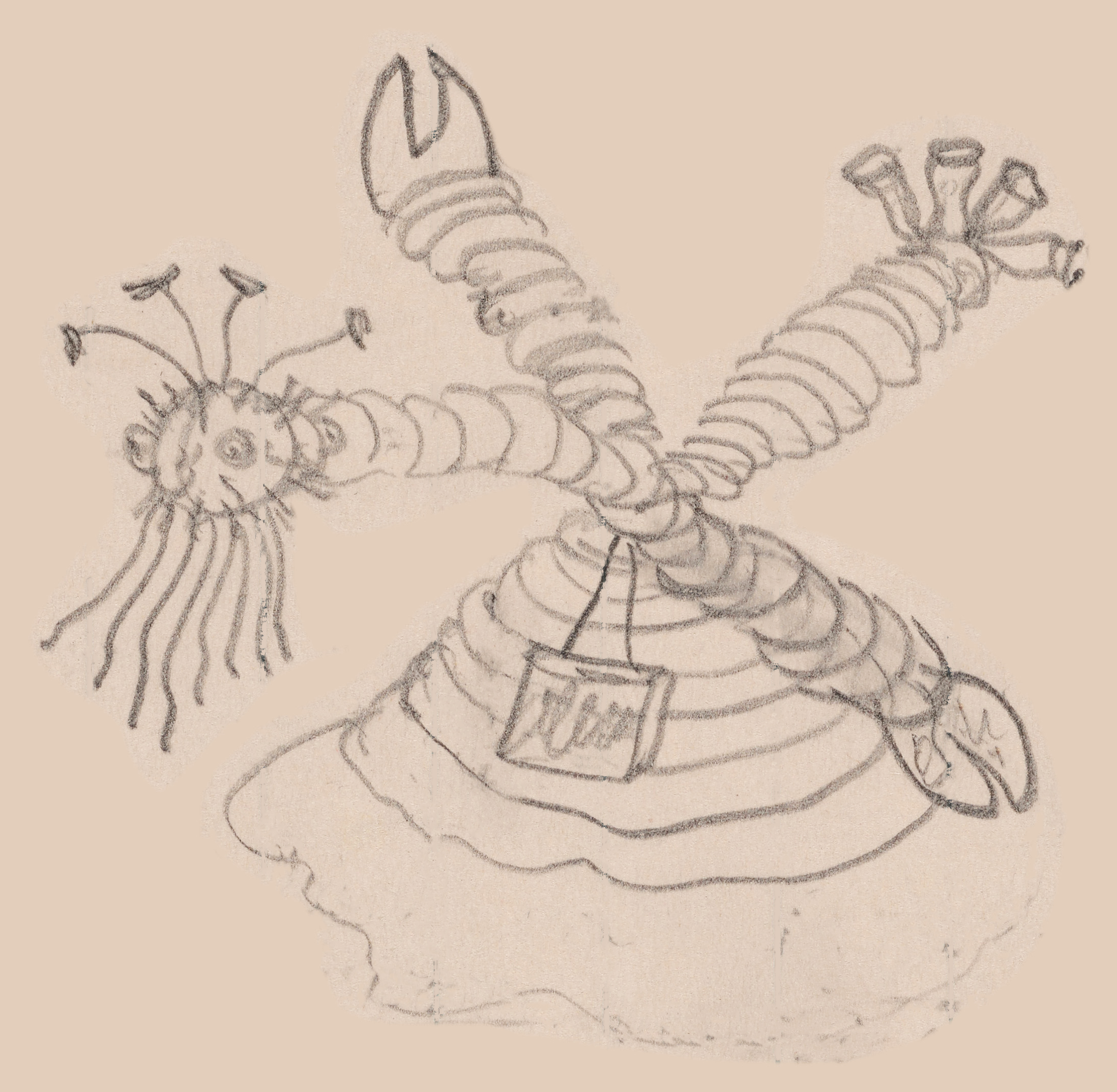My sixth set of notes on the book of Lovecraft’s Letters to Wilfred B. Talman and Helen V. and Genevieve Sully (2019). Lovecraft is still writing to Talman, at this point in the book. Thee notes begin at the end of July 1936.
p. 255. “Walked to Hunt’s Mills yesterday and did a lot of writing on the rocks beside the falls.” This is Lovecraft venturing into relatively new local territory, late in his life. See also p. 273 for other walks to new local places.

p. 255. “The latest issue of The Californian has a long fantasy which utterly surprised me with its fine rhythm, poetic imagery, & cosmic imagination”. This was by Barlow, “A Dim-remembered story”.
p. 260 and p. 262 and p. 267. Lovecraft gives substantial charts of parts of his family tree.
p. 264. “Site of Jake’s still vacant”. This being Jake’s cafe, a favoured cheap haunt which HPL would often take visitors to. In a slightly later letter of 25th August 1936, HPL reveals he had been down to their “slum” Wickenden Street branch on the edge of Fox Point, which appears to have serviced the Fox Point dockside trade, and found it closed. It had formerly remained open while the central branch had shut, as evidenced by a September 1935 letter to Wandrei…
I have discovered the slum branch of Jake’s is still open, so that if the call of old times is sufficiently strong, we can plunge down South Main St. & tank up with the familiar overdoses in a hardy waterfront section where the sparrows chirp in bass & the policemen go in carbine-bearing squads.” (November 1935, the volume of Wandrei letters, page 345). [carbine-bearing = bearing rifles].
But even this outpost of Jake’s was gone by August 1936, presumably a late casualty of the Great Depression.
p. 271. Due to a sloppy publisher, Lovecraft has lost… “my only lendable copy of ‘Hypnos’ and much irreplaceable N.A.P.A. [amateur journalism papers] matter to boot”. This was apparently due to unprofessional behaviour at “Loring & Mussey” the publisher. I Am Providence reveals that Mussey’s wife read the submissions and “doesn’t like the stories”. The proposal for a book was thus turned down, and from what Lovecraft says here it appears that his unique submitted material was not returned.
p. 272 and p. 275. Lovecraft speculates at length about writing a novel, but gives no indication of the setting or theme. “I shall probably be trying some novel of the given kind eventually, whether or not any market exists for it.” p. 276. “I have for the last few weeks been trying to clear my programme for another of my seasons of fictional experimentation […] it is quite possible I may arrive at the novel-synopsis stage”. But this was November 1936, and more stories and a novel were not to be.
p. 277. He was then living on “$10.00 to $15.00 per week”, and writes that he will soon have to do “some sort of job-hunting outside writing. I may run an elevator”. In those days large elevators (lifts) had uniformed male attendants in hotels and large business enterprises.
p. 281. Arthur Leeds last known address, as known to HPL in January 1936, was “228 Henry St., Brooklyn.”
And then a short further letter of 28th February — “constant pain” — and that was the last sent to Talman.
The letters to Helen V. Sully then begin, the first dated the end of July 1933.
p. 287-88. Advice on what to see in Quebec. Champlian St. in Quebec… “The region (with empty, gaping cellars on one or both sides) appears to be wholly deserted, & some still tenanted by a squalid population. The spectrally sinister air of this hideous backwater — isolated from the healthy world & crowded between the brooding gulfs of the sea & the sullen bedrock of Mother Earth — is of ineffable imaginative fascination.” On p. 293 he recalls that “most of my circuit of the Isle d’Orleans (Île d’Orléans) was accomplished amidst pouring floods”. The isle was a traditional Quebecois island near the city, which old guidebooks say is “surrounded by reefs and shoals”.
p. 289. The price-competing Providence-to-Newport boats. “Old Sagamore is down to 50c … & Mount Hope has met Nelseco II‘s 75c.” “If rates get down to a quarter I shall become a virtual commuter!” Nelseco II is a new one to me, though it appears to have been too expensive for Lovecraft. Evidently it was competing for the upmarket trade in the summer of 1933. Fast and exclusive, by the look of it…

Nelseco II

The big Mount Hope. Apparently had a ballroom on board!
p. 293-97. Extensive and evocative memories of his Quebec trip, which should be appended to any reading of his guidebook to the city.
p. 296-97. “A feature of constant interest was the sky — the grotesque and mystical cloud effects of a sort peculiar to the far north. [… this] indubitably plays a part in the mystical temperament of northern as distinguished from southern races. [The surviving myths and legends of the North] are all products of a climate whose mists and vapours, & capricious gradations of light and shade, conduce to feelings of cosmic uncertainty, vague expectancy, & the imminence of unseen marvels.”
p. 299. Isolated Marblehead had an unusual character partly due to the people as well as the isolation, being settled by… “Channel Islanders rather than the East Anglian stock dominant among the Puritans”.
p. 286. “So far as I can see the destruction of values leads only to net impoverishment of life; since new values of real, subconscious validity cannot be created over night”. p. 308-09. “The trouble is that substitutes can’t be devised over night. They have to grow by gradual accretion through long centuries of homogenous & continuous experience before they can dominate the subconscious mind & provide that sense of direction and purpose which alone saves life from becoming a nightmare”. […] It is then our task to save existence from this [current modern] sense of chaos & futility by rebuilding the purely aesthetic & philosophical concept of character & cosmic pseudo-purpose — re-establishing a realisation of the necessity of pattern [which can be found most easily in Christianity]. The framework it has bequeathed will serve a useful purpose — ensuring for the increasingly non-religious ethics of the future that force of traditional continuity which realists recognise as so essential to any real working system of action or emotion.”
p. 309. “It would have been better if we had kept our classical conception of ethics as a matter of beauty, good sense, & taste — the province of the non-supernatural philosopher — for its survival would not then have been so imperilled by the decline of religion.”
p. 320. November 1933. The communist culture of the Russian Soviets is being made by… “under-men who never really belonged to any civilisation. They were too primitive and close to bare animal struggle for subsistence to share any but the crudest and simplest attributes of the old culture. It is because they had so little anchorage in the past that they are now able to devote themselves so wholly to an unknown future”.










